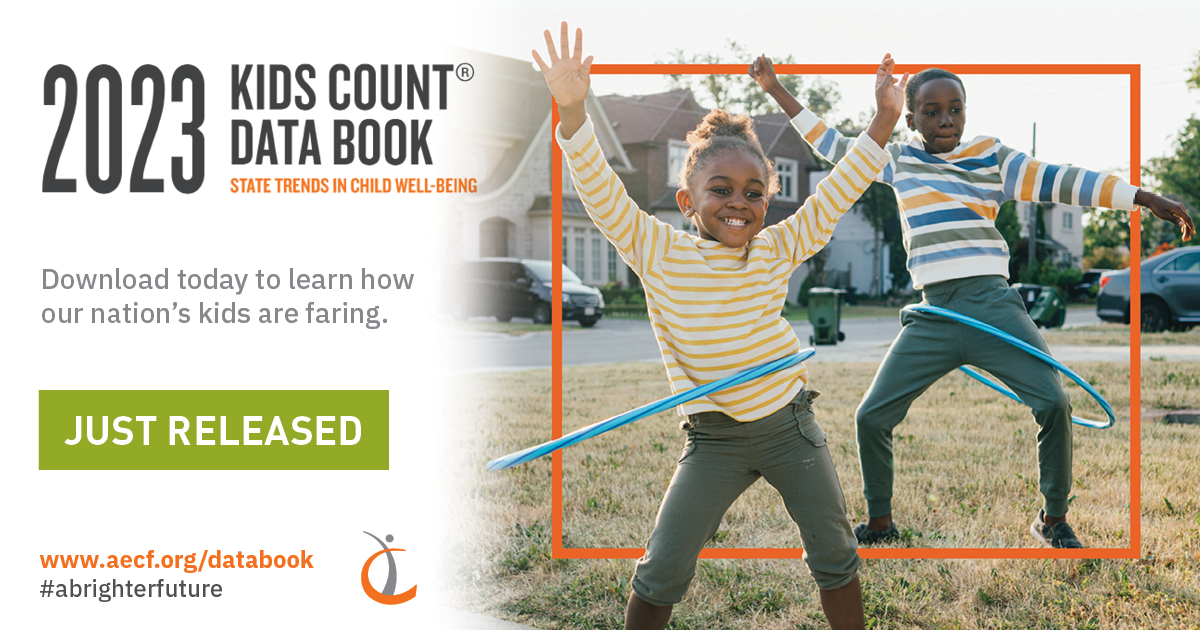

Every year Voices partners with the Annie E. Casey Foundation to release their annual ranking of child well-being, the KIDS COUNT Data Book. This year’s data includes a look at the impact of the COVID-19 pandemic on well-being. Virginia ranks 14th among states in child well-being, remaining in a similar position as previous years. The Data Book presents national and state data from 16 indicators in four domains — economic well-being, education, health, and family and community factors — and ranks the states according to how children are faring overall. Compared to prior to the pandemic, children in Virginia are doing better on eight indicators and worse in six.
Despite a 14th overall ranking for Virginia, there can be no ‘return to normal’ with 13% of all children living in poverty. And when the measures presented in the Data Book are disaggregated for outcomes by race/ethnicity the data show that overall rankings can mask racial disparities. The different outcomes by race for children are important to consider because they reflect the historical and structural racism that have shaped economic policies, housing opportunities and educational settings in America.
The Data Book is broken down into four indices of child well-being. To provide deeper insights into well-being by children of different racial groups the interactive “dot plot” charts below demonstrate where children in Virginia are having a different experience than the average child. Using this deeper analysis can point to which policy areas need to be prioritized to ensure all children in Virginia have the opportunity to thrive.
In the area of economic well-being, Black children are more likely to live in poverty and have a parent who lacks full-time, year-round employment. This disparity by race demonstrates how discrimination in employment and unfair wages impact Black and Latino families, as well as a need to focus on economic policies such as tax credits or child care access and to ensure more children have access to these economic supports. Households with Hispanic or Latino children are more likely to pay more than 30% of their income on housing. This disparity demonstrates how more challenging systems such as affordable housing and assistance should be accessible for non-native English-speakers and recent immigrants.
In the education index, Virginia ranks 10th, our highest ranked area. Yet looking at the dot plot below it is evident that in several areas there are wide disparities in outcomes related to race. Similar to housing, navigating preschool and child care access can put non-native English-speakers and recent immigrants at a disadvantage. Any learning that happens, while simultaneously learning a new language, can put English-language learner students at risk of falling behind. Across the state and nation, student performance in reading and math declined as a result of the pandemic. In Virginia the gaps between racial groups were present before the pandemic.
Health
Virginia's ranking is lowest in the health index in comparison to other measures and other states. One measure included in the Data Book, percent of children who were overweight or obese, was not available by race for children in Virginia. For the other measures, the well-documented racial disparities in birth outcomes is evident in the outcome for birthweight. Policies such as health insurance coverage for pregnant women and implicit bias training for maternal health providers are suggestions to improve this outcome. However, the most glaring and most stark disparity in health outcomes is the disparity in the rate of child and teen deaths per 1,000 children for Black children. The child/teen death rate for Black children is twice the rate of all children in Virginia. Recent studies have pointed to increasing death rates for children related to suicide, homicide and firearm access. The safety of our communities is imperative to ensure that no child dies due to injury or violence. Possible policy solutions could include using data to define which communities need resources to address injury/violence and asking leaders in those communities to identify solutions.
Virginia ranks 17th in the area of family and community well-being. The indicators selected by the Annie E. Casey Foundation are indented to represent community make up and support. It is important to note that additional measures and protective factors can represent the well-being of a community. On these measures, Hispanic and Latino families are less likely to have a US high school diploma. Black children are more likely to live in high poverty neighborhood due to historical housing discrimination and redlining. Possible policy solutions to improve family and community well-being could include investing in place-based strategies such as maternal health hubs, family resource centers or community schools to improve access to opportunities and the positive climate of a neighborhood or community.
Read More Blog Posts